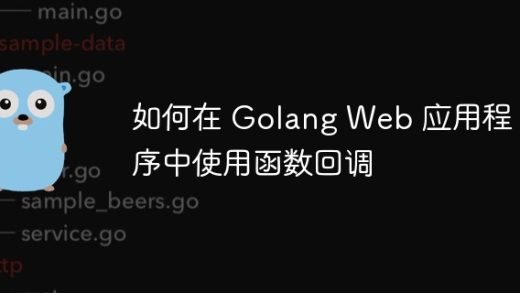当前位置: > > > > XML 编组无需 Root 即可生成 XML
来源:stackoverflow
2024-04-22 08:27:40
0浏览
收藏
偷偷努力,悄无声息地变强,然后惊艳所有人!哈哈,小伙伴们又来学习啦~今天我将给大家介绍《XML 编组无需 Root 即可生成 XML》,这篇文章主要会讲到等等知识点,不知道大家对其都有多少了解,下面我们就一起来看一吧!当然,非常希望大家能多多评论,给出合理的建议,我们一起学习,一起进步!
问题内容
我正在 golang 中开发一个 rest api,并且能够将数据编组为 xml 和 json。我的结构有多个记录,但 xml 编组不会为这些记录添加根。因此 xml 无效。
我看到一些问题通过设置 xmlname 得到了解决,但我认为这只会将我的客户类型更改为其他类型。
我仍然可能尝试添加 xml 编组字节并连接。但我不确定我是否必须这样做。
编辑:显然 xml 已正确编组,因为我正在编组一个内部包含多个对象的结构。然后编组为每个对象创建单独的 xml 文档。那么问题是其余客户端可以使用什么来使用数据,或者在其余响应中发送多个 xml 文档是一种不好的做法吗?浏览器无法显示生成的 xml。
要返回单个 xml 文档,我必须将列表放入一个结构中,然后可以对其进行编组。我不确定如何以这种方式使用 sqlx 初始化结构。
添加以下代码不起作用:
type custs struct {
list []customer `xml:"customer"`
}
custs customers.[]customer = []customer{}
代码:
package main
import (
"database/sql"
json "encoding/json"
"encoding/xml"
"fmt"
"net/http"
)
type customer struct {
customerid int `db:"customerid"`
firstname string `db:"firstname"`
lastname string `db:"lastname"`
company sql.nullstring `db:"company"`
}
func tstsqlite(w http.responsewriter, r *http.request) {
contenttype := r.header.get("content-type")
customers := []customer{}
var err error
fmt.print("executing query")
err = chinookdb.select(&customers, "select customerid, firstname,lastname, company from customers")
if err != nil {
panic(err)
}
for _, g := range customers {
fmt.println("firstname:", g.firstname, "lastname:", g.lastname)
}
var data []byte
if contenttype == "application/xml" {
data, err = xml.marshal(customers)
}
if contenttype == "application/json" || contenttype != "application/xml" {
data, err = json.marshal(customers)
}
w.header().set("content-type", "application/json")
w.write(data)
}
我得到的是以下 xml:
<customer>
<customerid>1</customerid>
<firstname>luís</firstname>
<lastname>gonçalves</lastname>
<company>
<string>embraer - empresa brasileira de aeronáutica s.a.</string>
<valid>true</valid>
</company>
</customer>
<customer>
<customerid>2</customerid>
<firstname>leonie</firstname>
<lastname>köhler</lastname>
<company>
<string />
<valid>false</valid>
</company>
</customer>
<customer>
<customerid>3</customerid>
<firstname>françois</firstname>
<lastname>tremblay</lastname>
<company>
<string />
<valid>false</valid>
</company>
</customer>
但我认为应该是这样的:
<customers>
<customer>
<customerid>1</customerid>
<firstname>luís</firstname>
<lastname>gonçalves</lastname>
<company>
<string>embraer - empresa brasileira de aeronáutica s.a.</string>
<valid>true</valid>
</company>
</customer>
<customer>
<customerid>2</customerid>
<firstname>leonie</firstname>
<lastname>köhler</lastname>
<company>
<string />
<valid>false</valid>
</company>
</customer>
<customer>
<customerid>3</customerid>
<firstname>françois</firstname>
<lastname>tremblay</lastname>
<company>
<string />
<valid>false</valid>
</company>
</customer>
</customers>
编组的 json 看起来是正确的,因为客户位于括号中:
[
{
"CustomerID":1,
"FirstName":"Luís",
"LastName":"Gonçalves",
"Company":{
"String":"Embraer - Empresa Brasileira de Aeronáutica S.A.",
"Valid":true
}
},
{
"CustomerID":2,
"FirstName":"Leonie",
"LastName":"Köhler",
"Company":{
"String":"",
"Valid":false
}
}
]
解决方案
您必须将此客户集合包装在另一个结构中,如下所示
package main
import (
"encoding/xml"
"fmt"
"os"
)
func main() {
type Customer struct {
XMLName xml.Name `xml:"Customer"`
CustomerID int `db:"CustomerId"`
FirstName string `db:"FirstName"`
LastName string `db:"LastName"`
Company string `db:"Company"`
}
type Customers struct {
List []Customer
}
csts := []Customer{
Customer{CustomerID: 1, FirstName: "John", LastName: "Doe", Company: "Demo Company"},
Customer{CustomerID: 2, FirstName: "John2", LastName: "Doe2", Company: "Demo Company2"},
}
res := Customers {
List: csts,
}
output, err := xml.MarshalIndent(res, " ", " ")
if err != nil {
fmt.Printf("error: %v\n", err)
}
os.Stdout.Write(output)
}
默认它可以采用构造的名称。您还可以使用 xml.name 类型自定义名称。
今天关于《XML 编组无需 Root 即可生成 XML》的内容就介绍到这里了,是不是学起来一目了然!想要了解更多关于的内容请关注公众号!


